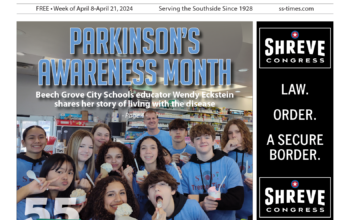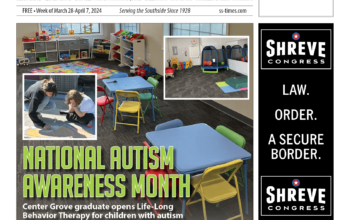Topics is a course at Southport High School, taught by Kevin Sanders, which analyzes major events from United States and world history through Hollywood films that attempt to portray those events. Students investigate historical documents and other sources to determine if a film is historically accurate.
The goal is for students to develop deeper understandings of the historical discipline while generating questions about the way the world is around them, along with watching classical films that have graced American and international screens. This week, an anonymous student reviews the film Hacksaw Ridge.
By an anonymous student
Hacksaw Ridge, based in 1925 Lynchburg, Va., is a film full of intense scenes and actions that really affect you with the cinematography they use. Lighting, sound and camera angles all play big roles in this movie, and special effects really bring you in. Mel Gibson did a fantastic job with showing the emotions throughout the whole film. Gibson has shown what this battle was partially like by using research and the information given by Desmond T. Doss and his brother, Harold Doss.
In the beginning, Desmond Doss originally applied to be the nurse for the battle of Hacksaw Ridge. He couldn’t touch a gun because God told him that violence is never the answer. Every time Doss looks at a gun, the camera zooms in to show his hesitation and remind him of his past. Doss spoke of how the Lord would not want him using a gun, so he profusely refuses to use one. He gets beaten up for it by most of his crew members. When asked about his injuries, he simply states that he’s a “hard sleeper.” The camera only really focuses on Sgt. Desmond Doss, the men who beat him up, and Sgt. Howell. I feel this is to show that this conversation only concerns them, hence as to why everything else is blurred out.
In some of the more intense scenes, like the ones where they’re waiting to ambush or waiting for an ambush, the music and sound sort of slows down, and then builds up and gets loud. The representation of the sound and music would be the scene getting intense itself and trying to build suspense not only for the audience but also for the scene and portrayed soldiers.
With this film, Mel Gibson had both Doss brothers interviewed and talking about their experiences. I feel like they were trying to make it seem like you were actually there in the movie, and there was a ton of emotion for someone to not feel something while watching this film. Using historical events can make a cinematic movie seem so real based on what actually happened. It was hard to watch and take in, so one can imagine what it was really like. We don’t know what is planned for our future and we might never guess sometimes, and with historical events in a film, no one would expect what comes next, making it a better outcome.
Films with historical events should teach others more about what truly happened than what we are aware of, and they have. It is hard to get all of the information right on true events; it may have happened differently to many people. But with the information from someone who was in the middle of the event or events, it is hard not to believe them. Desmond was a man who believed he would help care for the injured and aid the soldiers from the battle, not knowing he’d save way more than he anticipated, not knowing he would leave the field, a hero.

